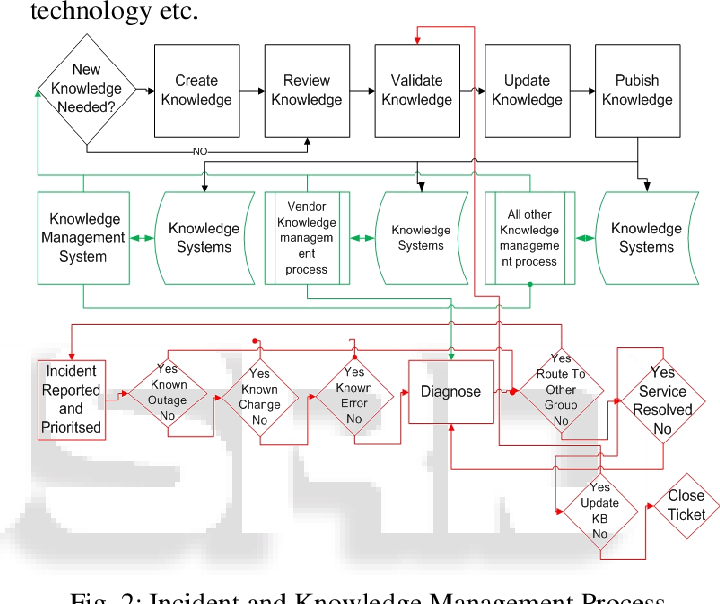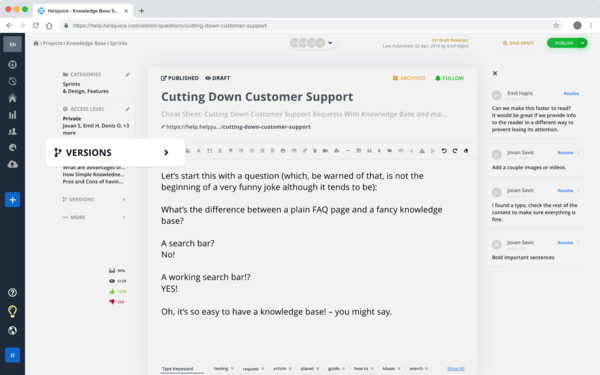In the rapidly evolving world of business, the capacity to effectively manage and leverage your organization's collective knowledge has become a game-changing competitive advantage.
Knowledge management (KM) refers to the systematic process of capturing, organizing, sharing, and applying the knowledge of an organization's employees to achieve its objectives.
Implementing KM best practices can lead to improved decision-making, increased efficiency, and more innovation within your organization.
In fact, a study by Panopto found that employees spend approximately 5 hours per week waiting for colleagues to provide knowledge, support, or training that they need to effectively do their work costing large organizations an average of $3 million per year.

If you're curious about how to ensure the success of your KM efforts, keep reading as we dive into the key best practices to help your organization maximize the potential of your knowledge management initiatives.
Knowledge Management Best Practices
We'd be remiss if we didn't pause for a moment to emphasize the importance of a well-structured approach in harnessing your company's organizational knowledge. As we get into the specifics, you'll find that the overarching aim is to nurture a culture where knowledge isn't confined to silos but circulates freely among your organization's teams and employees.
The upcoming best practices go beyond merely managing knowledge; they are directed at turning your organization's collective insight into a strategic powerhouse. By thoughtfully crafting and adhering to these KM best practices, your organization will be well on its way to driving innovation, sharpening decision-making, and fostering a culture of continual learning and improvement.
Recognizing the most effective and efficient ways to engage a knowledge management framework in your business is pivotal, ensuring that your organization's collective knowledge is always utilized to its utmost advantage.
Here are six key knowledge management best practices to help you get started.
1. Generate Team Buy-In
Getting all team members onboard with knowledge management (and all its related duties) isn’t always easy.
But to truly optimize your organization’s KM efforts — and the results you achieve from them, you need your employees to buy into the process. This means communicating to your employees “what’s in it for them”.
Be sure to show employees how KM will:
- Improve their immediate performance
- Help them improve their knowledge and skills
- Allow them to grow in their career and a member of your team
Monetary and career-based rewards might need to be on the table here — and rightfully so, given the value your employees' efforts will be bringing to your business.
2. Develop Standard Processes and Roles
Systematizing your approach to KM will allow you to optimize each step of the process, allowing you to generate optimal results.
To start with, create standardized operating procedures for each stage of the knowledge management cycle. Here, you’ll define:
- The purpose of the KM-related task
- The steps for completing the task
- The tools and resources needed to complete the task

You’ll also want to define specific roles for your KM efforts, such as:
- Knowledge leader: Those working to identify new knowledge and KM-related ventures
- Knowledge creator: Those in charge of developing new knowledge content and improving existing assets
- Knowledge manager: Those tasked with keeping all knowledge organized, maintained, and under control
3. Create a Knowledge Centric Environment
To ensure your team members fully embrace knowledge management best practices, it's crucial to create a knowledge-centric environment and promote a culture of continuous learning and knowledge sharing within your organization.
Encouraging storytelling, as emphasized in Learning to Fly by Chris Collison and Geoff Parcell, can be a powerful way to facilitate knowledge sharing and learning within your organization as it makes information more relatable and engaging. By having knowledge experts share their expertise and experiences through stories, team members can more easily remember, understand, and apply the lessons learned, leading to enhanced collaboration and problem-solving.
In addition to storytelling, establishing standard operating procedures for KM tasks is essential to streamline and normalize knowledge management processes within the organization. This solid foundation will enable employees to consistently follow best practices and ensure that knowledge is effectively captured, organized, and shared.
In immersing your team in a knowledge-centric culture, they’ll begin harnessing their knowledge as well as their colleagues’ knowledge to the fullest potential and using it to supercharge their every effort moving forward. To further support this culture, provide ample employee development opportunities and foster an atmosphere that encourages open communication and collaboration.
Some steps that can help in this process include offering training sessions, workshops, and seminars to help employees stay up-to-date with industry trends and best practices. Additionally, create opportunities for cross-functional collaboration and knowledge transfer. These may include mentoring programs, regular team meetings, and knowledge-sharing platforms where employees can contribute their insights and learn from the experiences of their colleagues.
4. Stay Focused on Progress and Improvement
Continuous improvement has been a running theme throughout this article.
Here, we’re talking about the ongoing improvement of your overall knowledge management efforts. Again at routine intervals and on an as-needed basis, your team should be thinking about:
- New methods and channels for sourcing knowledge
- Ways to improve your knowledge creation processes
- How to use your knowledge content more effectively
Your company and industry is constantly evolving — and it’s often your ever-evolving approach to knowledge management that will allow your team to navigate any changes that come your way.
5. Invest in the Right Tools
Technology is an essential part of modern knowledge management practices.
But not every KM-related tool on the market is right for your business. With so many knowledge management solutions available, it’s important to find the ones that meet your current needs and budget — and that will allow for seamless growth in the future.
A few factors to consider when doing your research to pick the right knowledge management tools:
- Is the tool easy to use?
- How easily does it integrate with your existing tech stack?
- Is the solution scalable enough?
- What type of analytics does it provide?
With the right knowledge management tools in place, you’ll be able to empower your team to manage and share knowledge more efficiently and effectively.
6. Evaluate and Measure Success
Regular assessment and evaluation of your knowledge management initiatives are crucial for continuous improvement.
Establish key performance indicators (KPIs) to gauge the effectiveness of your KM efforts. Consider knowledge management metrics such as:
- Content interactions
- Time spent searching for information
- Knowledge reuse rate
- The number of contributions to a knowledge repository.
Regularly review these metrics so you can identify areas that require improvement as well as recognize and celebrate successes. By measuring success, you'll ensure that your knowledge management strategy remains aligned with your organization's goals and evolves alongside its needs.
Seizing the Competitive Advantage with Effective Knowledge Management
Mastering the above knowledge management best practices can help your organization reach its full potential. By generating team buy-in, developing standard processes and roles, creating a knowledge-centric environment, promoting continuous learning and knowledge sharing, investing in the right tools, and evaluating success, you can drive improved decision-making, increased efficiency, and heightened innovation within your organization.
By actively embracing these practices, your organization will not only stay ahead in the rapidly evolving world of business but also foster a culture of growth and continuous improvement.


![Examples of Knowledge Management Systems [2025]](https://static.helpjuice.com/helpjuice_production/uploads/upload/image/4752/direct/1665494843148-Knowledge%20Management%20Systems%20Examples.jpg)


